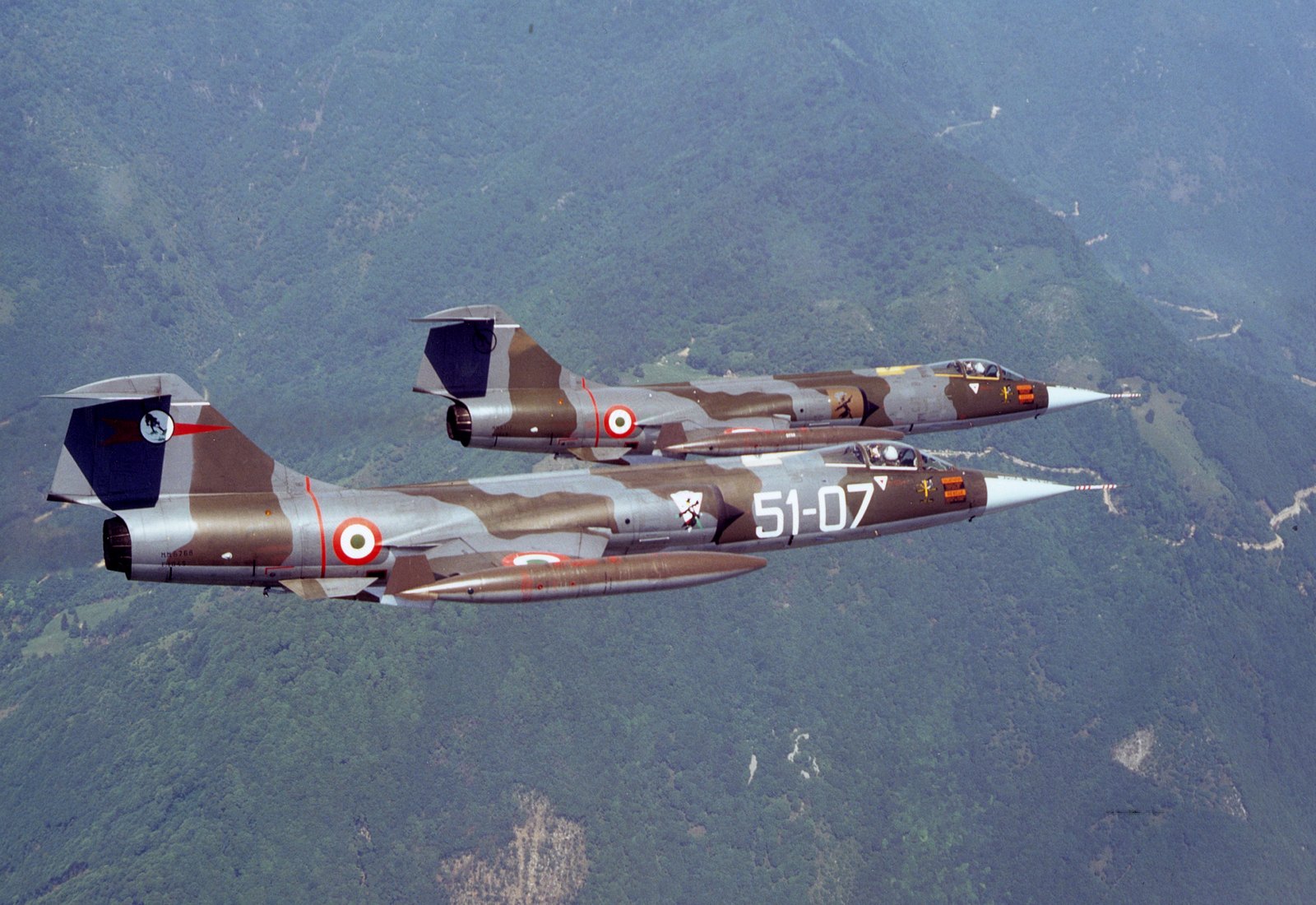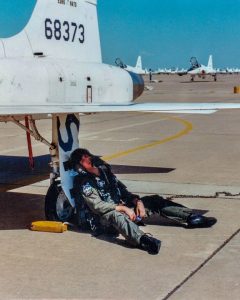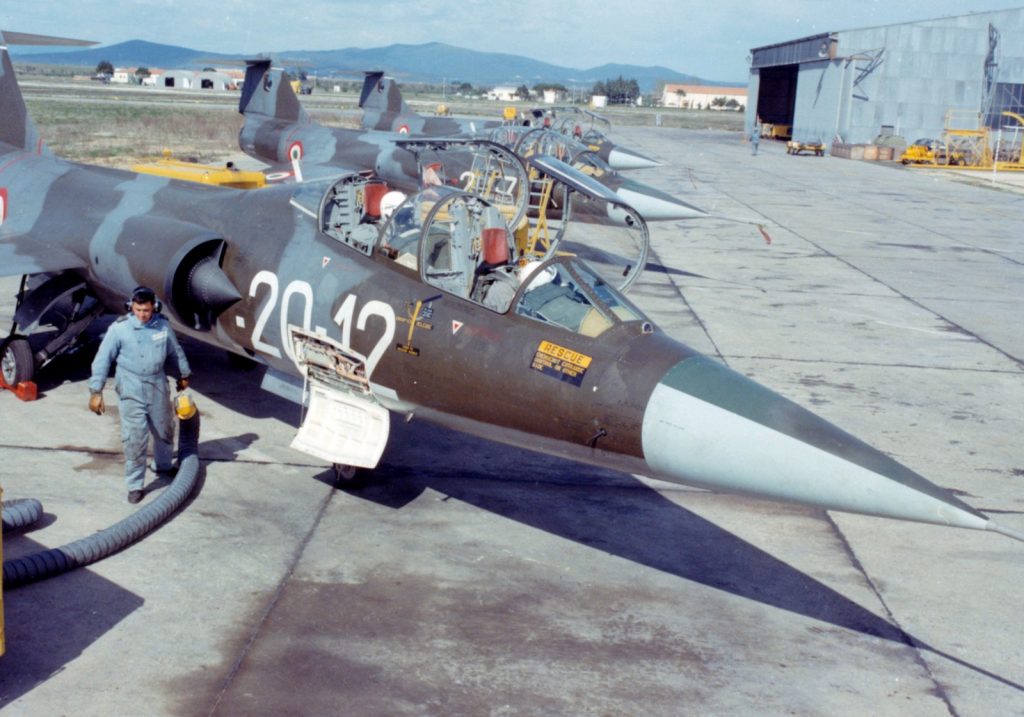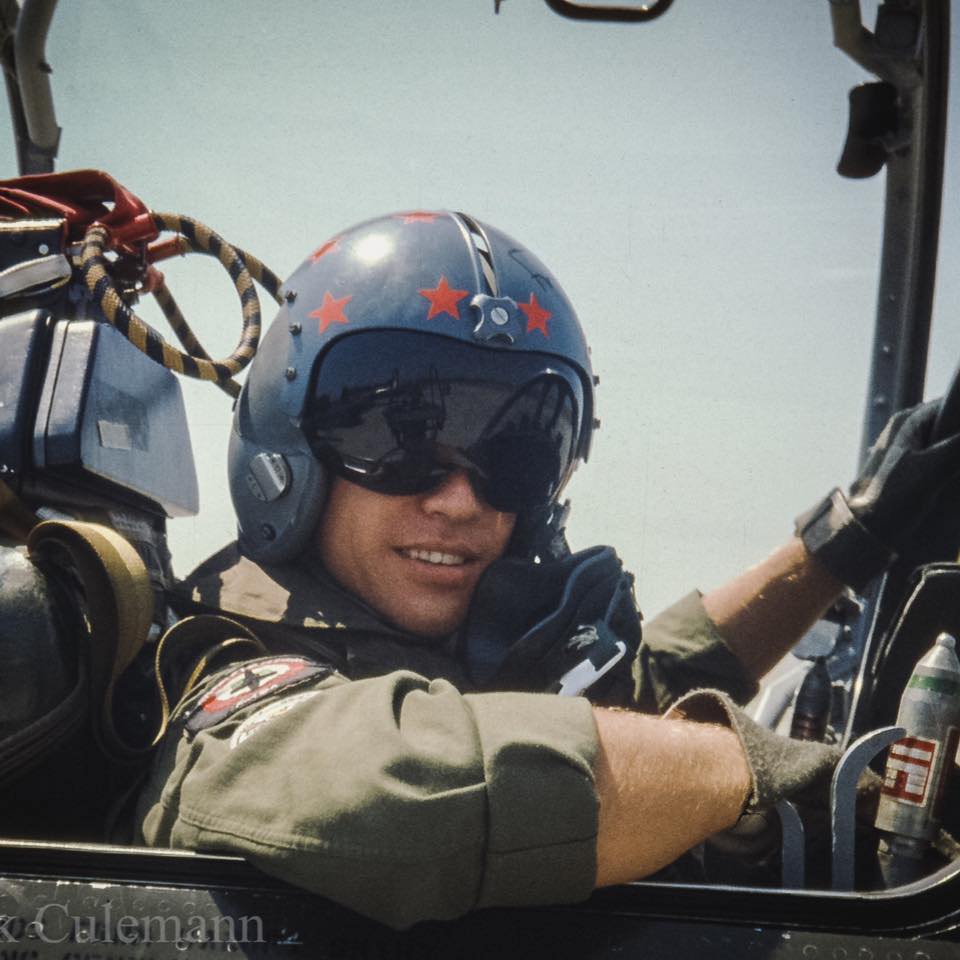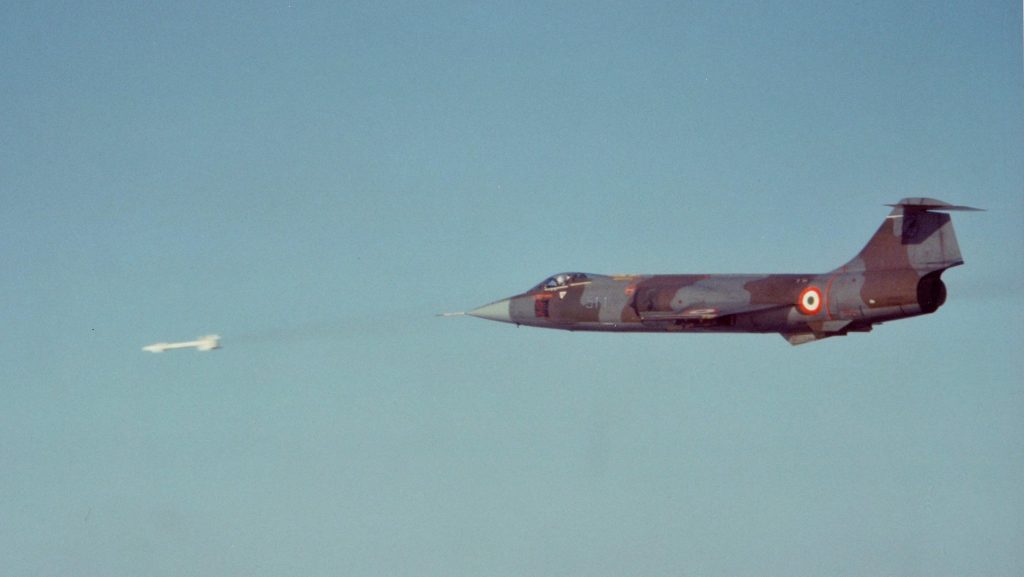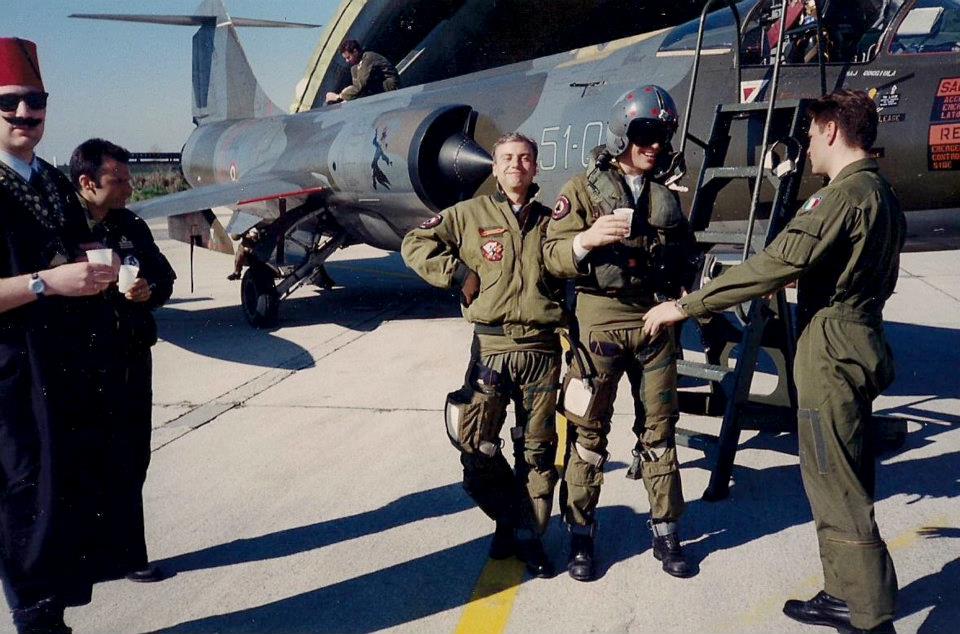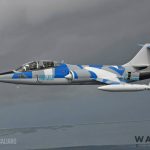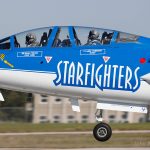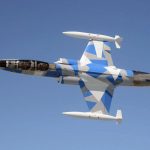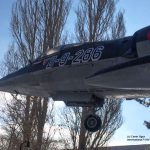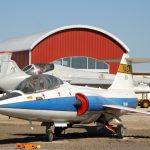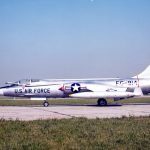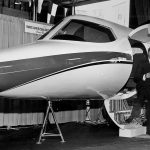Pilot Report: This the first in a series of recorded flying experiences that we have received from readers and adapted for our website. We will publish further accounts from time-to-time, but are eager to record more for the future. If any readers are interested in sharing their own memories and stories with us, please do contact us HERE.
In today’s report, we will hear from Frank Culemann, a former Italian Air Force pilot who had the good fortune to fly the mighty Lockheed F-104 Starfighter. Graduating in the top twenty of his class, Frank, when just in his early 20s was sent to the United States to join the Euro-NATO Joint Jet Pilot Training Program. The 80th Flying Training Wing provided undergraduate pilot training in the T-37 and Northrop T-38 Talon for 13 countries. Upon his return to Italy, he was in a position to choose between the Panavia Tornado and the mighty Starfighter. This story takes place over the Tuscan skies, at the Grosseto Air Base, back then home to the TF-104 Starfighters of the 4th Wing, 20th Gruppo Addestramento Operativo (Operational Conversion Unit), and now home to the Italian Air Force’s Eurofighters.
By Frank Culemann
5 years after I joined the Air Force, almost to the day, I showed up at the gate of the 4th Wing in Grosseto, home of the 20th Gruppo Addestramento Operativo (Operational Conversion Unit), to start my training on the F-104 Starfighter. It was the end of September 1986, and I was 23 years old.
It all started with a couple of weeks of ground school.
On paper, it seemed like a pretty straightforward airplane albeit with a few oddities here and there: no battery switch, no parking brake, T2 reset, RPM lockup, Boundary Layer Control etc…
Our instructors guaranteed to us that, on our first takeoff, we wouldn’t be able to raise the gear in time to avoid overspeeding it. “That’s not going to happen,” I thought to myself, “I’ll make it, I’ll be fast enough. The limit is 260 knots, plenty of time!”
My classmates and I would spend our days both in the classroom and at the Squadron. The instructors were really cool guys, and welcomed us as real pilots. We were not students anymore; we earned our wings, and it was refreshing to be treated as equals, well, equal-ish, even though we were still in training.
The day of our first flight was approaching fast, and all we practiced, while armchair-flying, was how to raise that landing gear in time! The rest didn’t count. It was all about becoming that legendary student who did it; the fastest of them all!
Anyway, the day finally came. My instructor, Gianmario, was an ex-22nd Squadron pilot, and I considered it a good omen, since that was the Squadron I wanted to be assigned to [following graduation]. The briefing was long and detailed, and I felt as ready as one could be. After the briefing, we went to the equipment room to dress for the occasion. A G-suit, garters, Secumar life and survival jacket, helmet, thigh pad and, for the first time ever, no parachute. Our 104s were all equipped with a proper Martin Baker 00 seat – a very comforting feeling!
Once at the jet, [we had] a quick walk around together with the instructor and then, finally, I got to strap into the cockpit of my TF-104, the training version of the Starfighter. Despite the two seater’s cockpit being slightly bigger than the single seater’s, it was still pretty small, and my 220 pound frame didn’t help. The problem was the seat, which was a lot deeper than the more comfortable, but inferior C-2. It felt like I was sitting too far forward, like an old grandma driving a car. I thought I’d never get used it. Anyway, from that moment, everything went as expected, and the days spent in the books paid off despite the usual clumsiness typical of flying an airplane for the first time.
The 104 has no APU, so it required external power – both electric and pneumatic – to start. There is close communication between pilot and crew chief during both engine-start and before-taxi checks. We called these “5 fingers” checks, because that’s what we used to communicate to the crew chief which system we were checking. At the first finger, the crew chief would check the speed brakes, the second finger was flight controls, third was trims and dampers, fourth, APC with shaker and kicker intervention and the last finger was flaps extension and BLC operation. It was a perfectly good jet, and we were ready to taxi.
Taxiing was also a bit odd. Much like the T-37, the steering button had to be kept pressed all the time and if – for any reason – the steering disengaged, the rudder had to be re-centered to be able to engage it again. This feature could (and did) become a problem during crosswind landings. One had to be really sure that the steering was engaged before deploying the drag-chute.
It was remarkable how quickly the engine would respond to any throttle input. RPM and throttle would move in perfect synchrony with almost no lag.
“Pins, Canopy, Swivel”, was the last check sequence before lining up and finally taking off. The afterburner lights up, and I can feel the first kick in the butt, so far it’s very similar to the T-38. However, the G-model’s afterburner comes on in two stages and there’s a second – almost unexpected – kick. The progression of acceleration is smooth, but impressive. At 80 knots, the airspeed indicator starts moving. In a few seconds, we reach 180 knots which is our rotation speed. I start pulling on the stick, about 4° to 5° nose-up. I concentrate on the main gear and as soon as I’m certain it’s not touching the runway anymore, I go for the gear lever and guess what? It was already up, and we were climbing through 500 feet. Damn!!
It took a few seconds to reach 300 knots; time to retract the flaps. At 380 knots, we come out of the afterburner, maintaining 400 knots for the climb. All I can compare this airplane to is the T-38, and besides a few differences in speed and performance, what really surprised me was how much heavier that stick was. The jet felt very stable, almost too much, and at least during my first flights, I had the impression of flying a simulator without motion. Somehow, the plane wasn’t talking to my butt! Once we reached the MOA at 15,000 feet, we started with some familiarization maneuvers. To give you an idea of how much this aircraft needed some experience before it could be flown like any other jet, these maneuvers had to be flown on instruments. For example, a lazy eight had to be started with a TACAN at 9 or 3 o’clock, TACAN inbound or outbound at the apex, and then TACAN at 3 or 9 o’clock when closing it. All aerobatic maneuvers had to be flown like that, and for the first time ever, an instructor would tell me that there was nothing to look at outside. Very weird. Everything was accompanied by a constant, pre-stall buffet. Something else to get used to!
Navigating back to the airport was straight forward; once trimmed, the aircraft was very easy to fly. The responsive engine also made it easy to maintain speed.
It was an easy aircraft to land; I remember nailing my first one. The difficult part was not the touchdown per-se but, because of the flat glide path, touching at the right spot. The use of speed brakes was strongly recommended during the flare to achieve this. Of course, one also had to overcome the urge to set the power to Idle while flaring. The muscle memory was there, and killed more than one ‘104 pilot. When in the LAND position, the flaps received bleed air from the engine compressor, making them feel like they were flying at a higher speed. The system, called BLC, worked well, but the RPM had to be kept at or above 80% until after touchdown; easier said than done!
The rest of the course went as planned, without major disruptions. I was getting to know the plane better and better every day, but boy, was I flying near Mt. Stupid; the Dunning-Kruger effect at its best! Being able to connect the garters to the seat in less than two minutes didn’t make me a competent Starfighter pilot. That tiny wing still had a lot to teach me, and was there, ready to bite me in the ass every time I went flying. I finally understood what induced drag really meant, and why the 104 was so formidably good at slowing down; not the blessing it was famous for. During our training, we all learn that energy management is important, but the Starfighter would take it to another level. One quote comes to mind: “Give me kinetic energy any day and I’ll take his potential energy and shove it up his ass,” (Pink Williams, Fighter Pilot).
Flying the mighty Starfighter was a pure joy. A plane that, from brake release, in a clean configuration, reached 37,000 in just over 90 seconds, that allowed me to see the world from 70,000 feet, and that made the other pilots always ask the same question: “But what does it feel to fly the F -104?”
About Frank Culemann
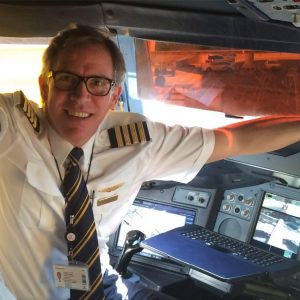
Many thanks indeed to Frank Culemann for providing this fascinating look at what it takes to fly the mighty F-104.
Pilot Report: This the first in a series of recorded flying experiences that we have received from readers and adapted for our website. We will publish further accounts from time-to-time, but are eager to record more for the future. If any readers are interested in sharing their own memories and stories with us, please do contact us HERE.







